One of the biggest and most famous palaces in the world can be found just outside of Paris. It’s filled to the brim with history and embodies the wealthy lifestyle of the Kings and Queens who built it. It eventually resulted in their downfall.
In this post, You’ll learn numerous interesting facts about the Palace of Versailles, the ultimate palace in France that sparked one of the most important events in European history.
1. Where is the Palace of Versailles located?
The Palace of Versailles is located southwest of the French capital of Paris, in the department of Yvelines, and the region of Île-de-France.
It’s located about 20 kilometers (12 mi) to the southwest of the historical center of the French capital. Versailles is one of the wealthiest suburbs of Paris.
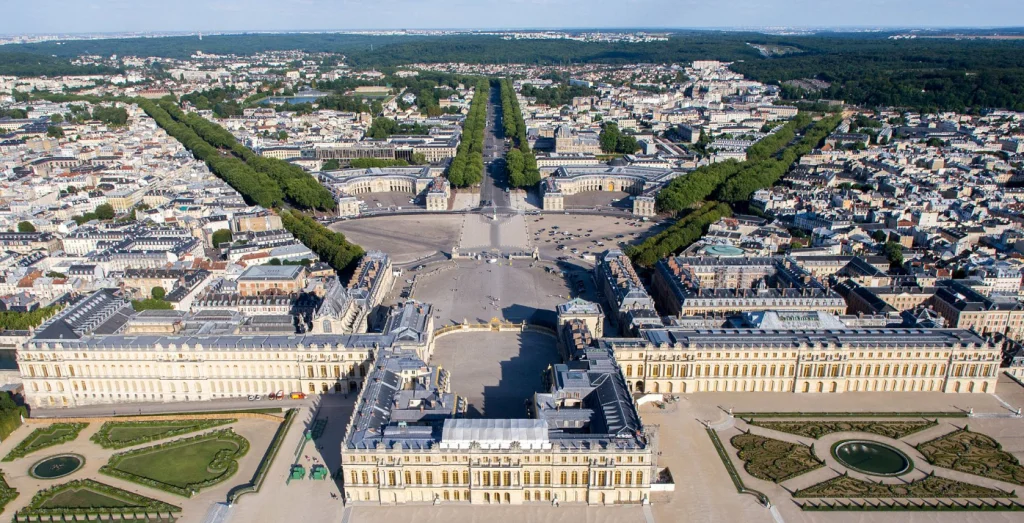
2. The original building was a hunting lodge.
Before there ever was a building in the area of the current location of the palace of Versailles, there was a small village and a church and nothing else.
The village was located in the woods and it was a popular spot for hunting. During one of the hunting visits of King Louis XIII, he decided to build a hunting lodge on the location the Palace of Versailles was built.
To be more specific, it was built on the exact location of the marble courtyard of the Palace of Versailles and was built around the years 1623-1624.

3. A remarkable event turned the hunting lodge into a castle.
A political game played by enemies of the then-powerful Cardinal Richelieu resulted in a fiasco.
They believed that by influencing the King’s mother, Marie de’ Medici, he would dismiss Richelieu from power. Instead, King Louis XIII pledged his support to the Cardinal and his mother was exiled.
While his enemies were celebrating a non-victory, King Louis XIII went to the hunting lodge together with Richelieu and decided at that moment to turn the hunting lodge into his castle.
The day the Palace of Versailles was “born” is sarcastically referred to as the “Day of the Dupes.”

4. The walls of the old castle still stand.
What most people probably don’t know is that the walls of the old castle, which you can see in the image above, actually still stand.
They are still part of the Palace of Versailles and overlook what is referred to as “The Marble Court.”
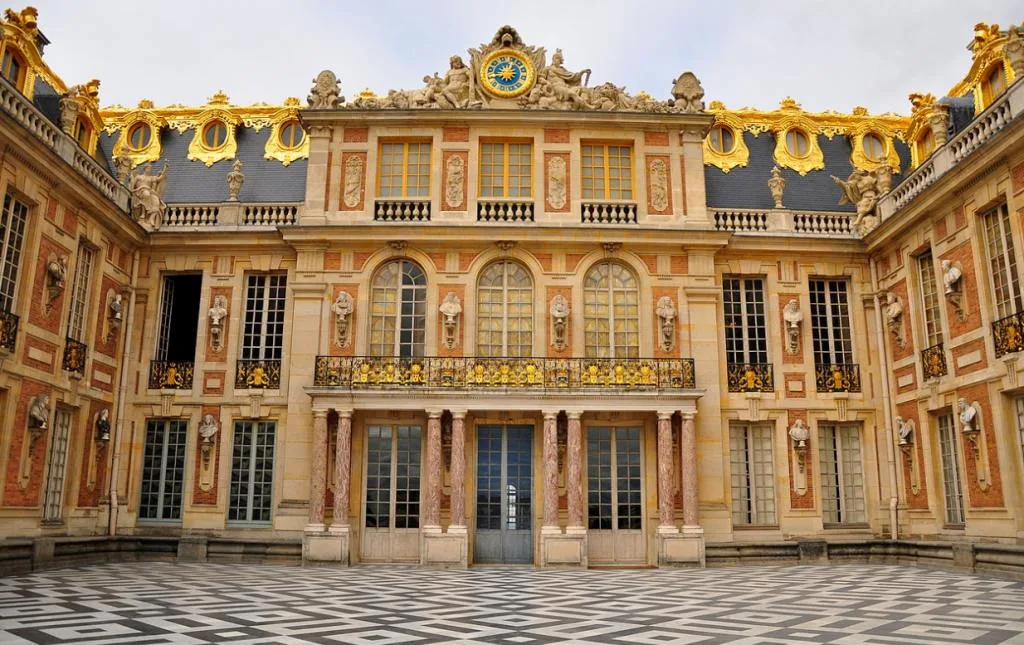
5. The original gardens had the same size.
The first castle was made of brick and stone and had classical pillars in the Doric style, originating in Greece and also used in Roman buildings such as the Colosseum and the Marcello Theater.
King Louis XIII didn’t mess around when it came to the garden. The land he purchased from the Gondi family, a rich Florentine banking family, was put to good use and the park and garden had pretty much the same size as they have today.
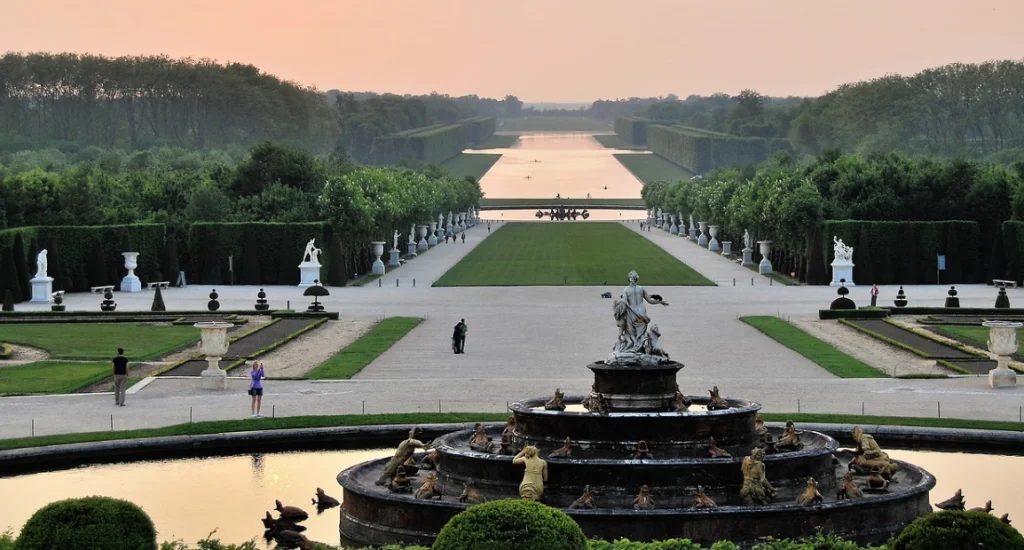
6. Things went really wild under Louis XIV
Honoring his nickname with all his power, the “Sun King” Louis XIV started the first phase of the extravagant expansions in 1661 and they lasted until 1678.
He commissioned the construction of 5 new wings, the most amazing garden in Europe, and two sets of apartments for the King and the Queen overlooking it.
On top of the huge additions to the main building of the palace and the gardens, he also had an additional palace built as a “summer retreat” called the “Grand Trianon” of which construction lasted about 38 years (1670-1708).
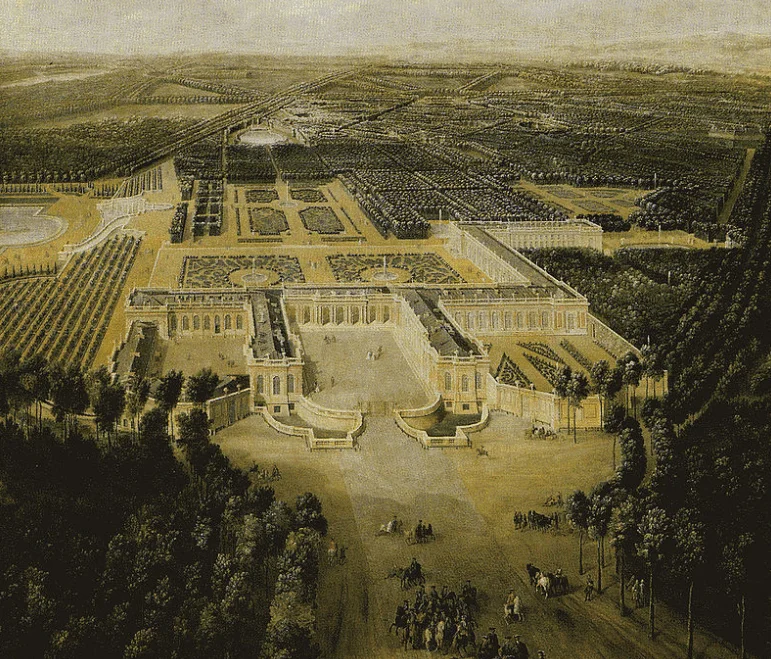
7. It wasn’t enough yet.
By the time the first enlargements were completed, the palace was becoming increasingly crowded. Government officials, courtiers, staff, and the entire royal entourage spent time at the Palace of Versailles, meaning there were thousands of people in the buildings at all times.
The solution was obviously to expand the already massive Palace of Versailles a bit more. These included 2 massive new wings alongside the “Cour Royale” and remodeling of the original hunting lodge and original apartments.
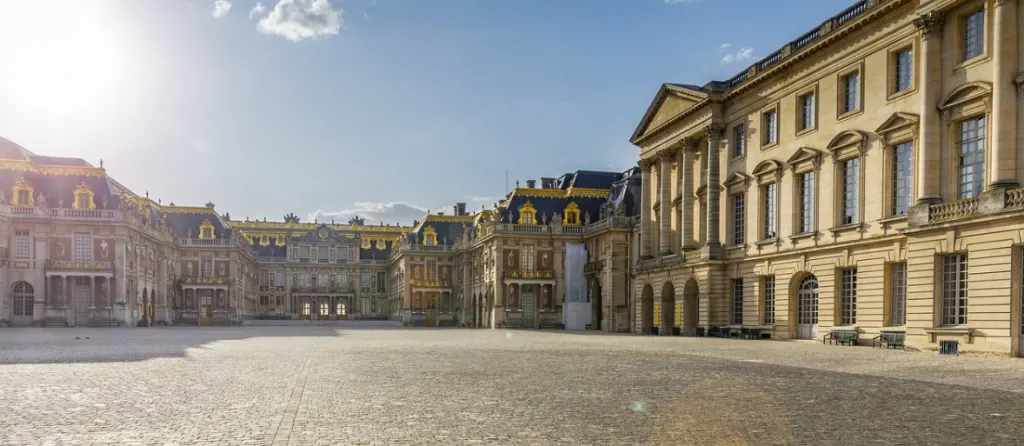
8. The fifth chapel was the good one.
A total of 5 chapels were constructed during the construction and expansion periods of the palace.
The chapels played a very important role in the daily life at the palace up until the French Revolution. This means that ever since Louis VIII turned his hunting lodge into a castle, a chapel was constructed as well.
Deeming all other chapels insufficient, Louis XIV built a huge baroque chapel to serve his needs.
The final chapel was finished in 1710 and one of the most significant moments that happened there was the marriage of Marie-Antoinette and Louis XVI on May 16, 1770.

9. The final chapel at Versailles got ridiculed.
The palace of Versailles is characterized by horizontality, just about everywhere. This makes the fifth baroque chapel a curiosity as it sticks out from the rooftop of the palace.
The exact words used by Louis de Rouvroy, Duc de Saint-Simon, were:
Even the chapel of Versailles is beautiful, it wrongfully proportioned design makes it resemble hell from above and it appears it wants to crush the castle.
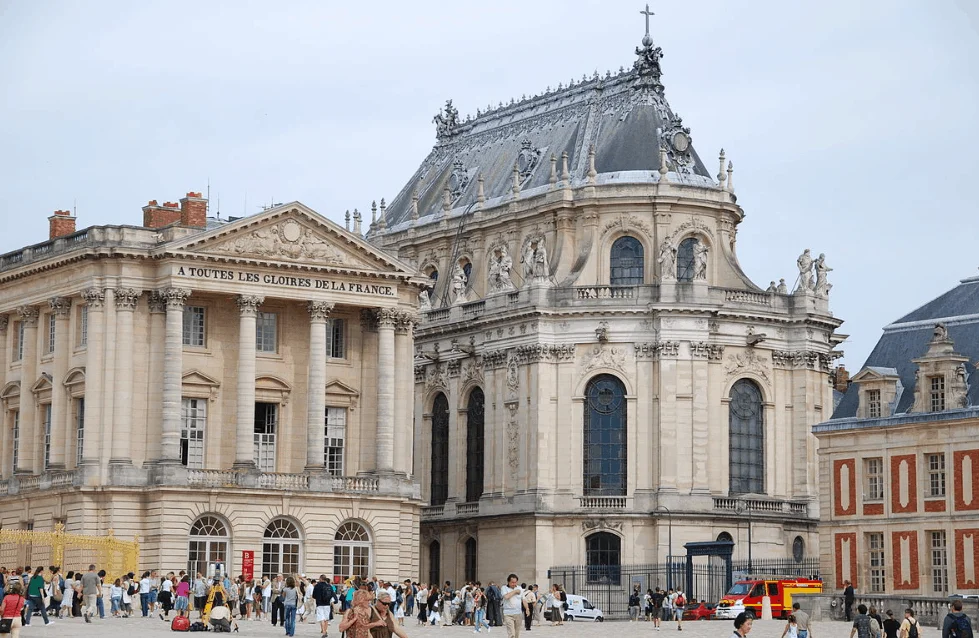
10. The final major changes.
Louis XV was a young boy of just 5 years old when he was moved out of the palace by Philippe II, Duke of Orléans, the regent of France during the childhood years of the future king.
He came back though when he was in charge of things and didn’t have a less expensive taste than his great-grandfather. Some of his additions include the “Salon d’Hercule,” the “Royal Opera Theater” and a complete remodeling of the royal apartments.
The final construction phase of the Salon d’Hercule started in 1724 and it was inaugurated as a ballroom for the wedding of King XV’s eldest daughter on January 26, 1739.

11. The end of the Ancien Régime
Economical problems in combination with what is described as a “representational culture” sparked the fire that led to the French Revolution.
The Palace of Versailles was the epitome of this absurd idea that overwhelming luxury would be enough to reflect the greatness of the French State at that time.
The opposite happened. The huge construction costs that already limited King Louis XVI in making further enhancements to the palace eventually left the state bankrupt, resulting in a financial crisis in the 1780s that had the most drastic consequences imaginable.
The members of the royal family that didn’t flee were moved out of the Palace of Versailles to live under house arrest in the “Tuileries Palace” near the Champs-Élysées until they were tried, sentenced, and executed or exiled.
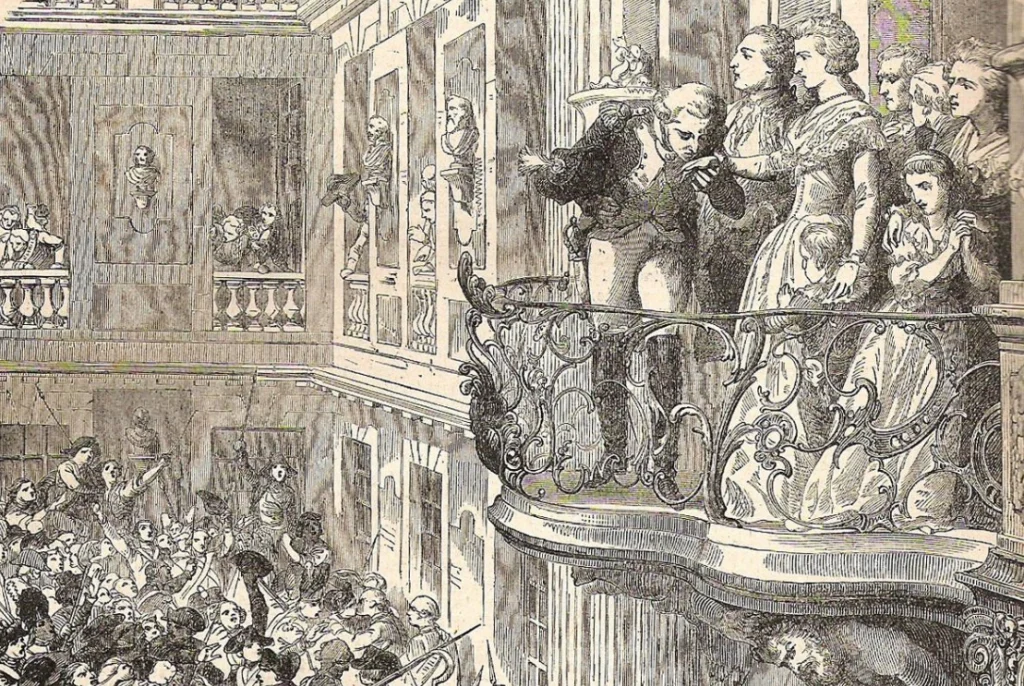
12. The cost of renovation was too high.
After the French Revolution, all the pieces of art including paintings, sculptures, fountains, and even decorations chiseled out of the walls were moved to the Louvre and auctioned. A total of 17,000 lots were sold during this period.
With damaged walls, neglected gardens, and basically, no decorations left, the likes of Napoleon Bonaparte and Louis XVIII simply couldn’t afford the renovations.
Napoleon did, however, restore the Grand Trianon and used it as a vacation house for his family. Some restorations were done by King Louis-Philippe as well to turn the palace into a museum dedicated to “all the glories of France.”
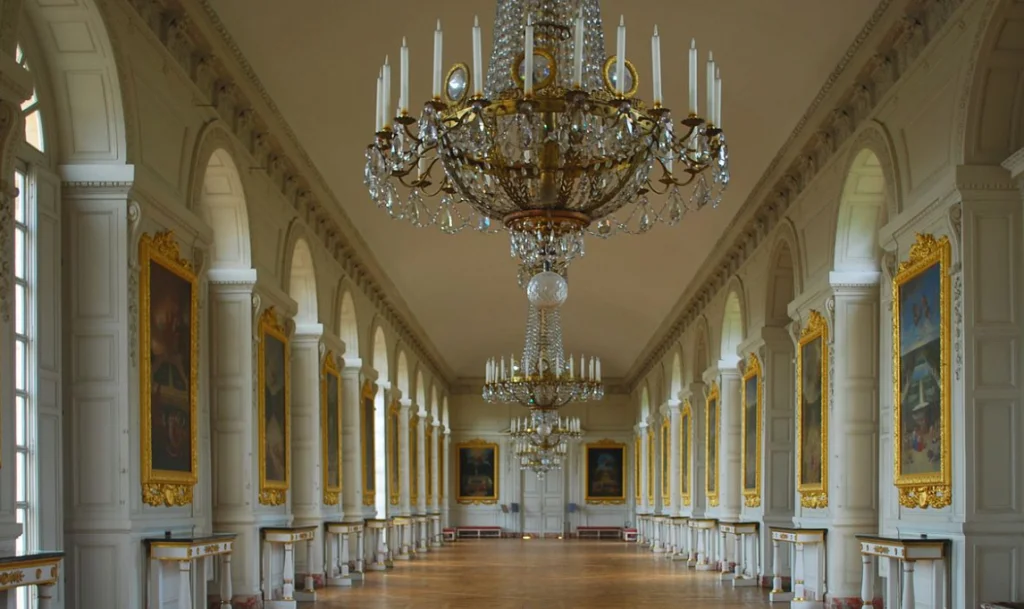
13. The first sponsor was American.
It wasn’t until the end of the 19th century that serious restoration efforts were started and continue to this day.
One of the most interesting facts about the Palace of Versailles and its renovations is that the first significant sponsor was American John D. Rockefeller.
After World War II, Rockefeller visited Europe and felt bad about the level of neglect the Palace of Versailles found itself in. In the year 1924, the billionaire decided to donate $2,166,000 which is worth well over $30 million if we count inflation over this period of time.
This basically kickstarted the renovation efforts that were needed and which are continuing today to restore the Palace of Versailles to its old glory.

More interesting facts about the Palace of Versailles
14. The total floor area of the palace is 67,000 square meters (721,182 square feet) and it’s located on a total area of 1,070 hectares.
15. The floor area of the main building of the palace is the size of over 12 football fields and it has 700 rooms, 67 staircases, 1,200 fireplaces, 2,143 windows, and 1,252 chimneys
16. The cost of renovating such an enormous palace is representative of what it cost to build. If we take inflation into account, it’s estimated that the total construction cost amounts to nearly 3 billion US Dollars. This estimate is probably only a fraction of what it really cost.
17. A lot of money was spent on the fountains in the garden of the palace. Louis XIV spent a vast majority of the budget, an estimated 1/3 of it, on hundreds of fountains that decorate the already impressive garden.
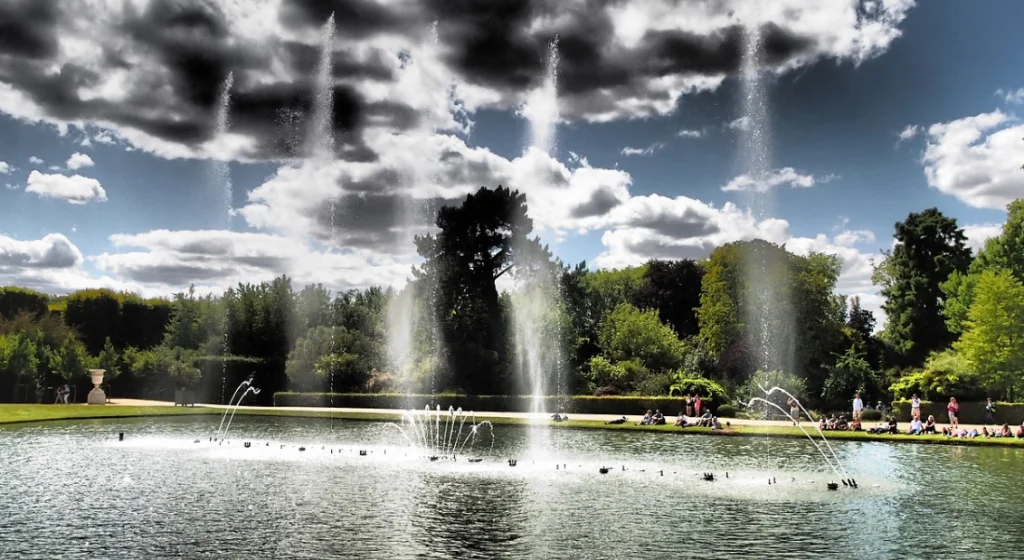
18. Because of the King’s love for fountains, there was a big structural problem. The palace of Versailles isn’t located next to a river! Numerous canals had to be dug, all redirecting water to the main basin to make the fountains work.
19. But most of the time, that wasn’t enough. The solution was very simple though. To ensure the fountains were working when needed, they only turned them on when the King went for his daily stroll to admire his costly fountains.
20. The Sun King Louis XIV used the big canal in the garden to show off his collection of boats. he actually sailed on the canal with small crafts or gondolas.
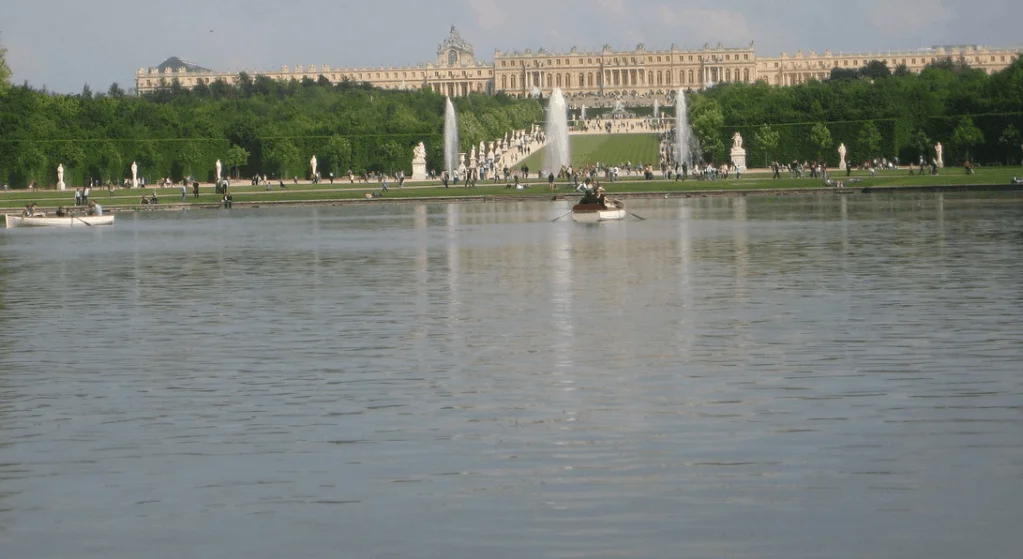
21. The canal smelled awful during the reign of King Louis XIV. The lack of freshwater flowing created some sort of swamp-like canal that actually made people feel sick to their stomachs because of its smell.
22. Marie Antoinette built a new mansion for herself in the park of the Grand Trianon, fittingly called the “Petit Trianon.” She didn’t really enjoy being a queen and built the estate so she could just be herself and relive happy moments from her childhood.
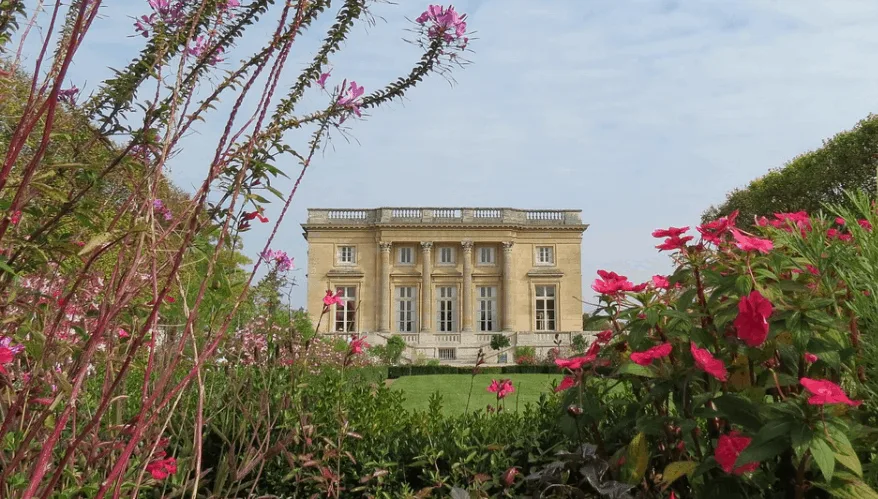



Leave a comment
You must be logged in to post a comment.